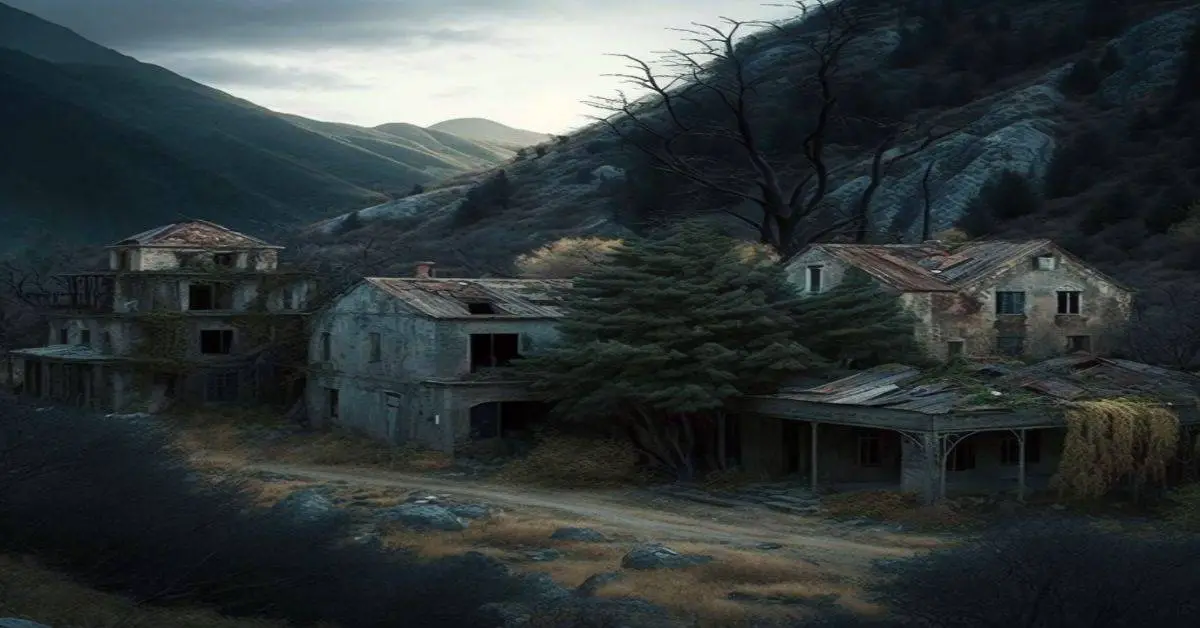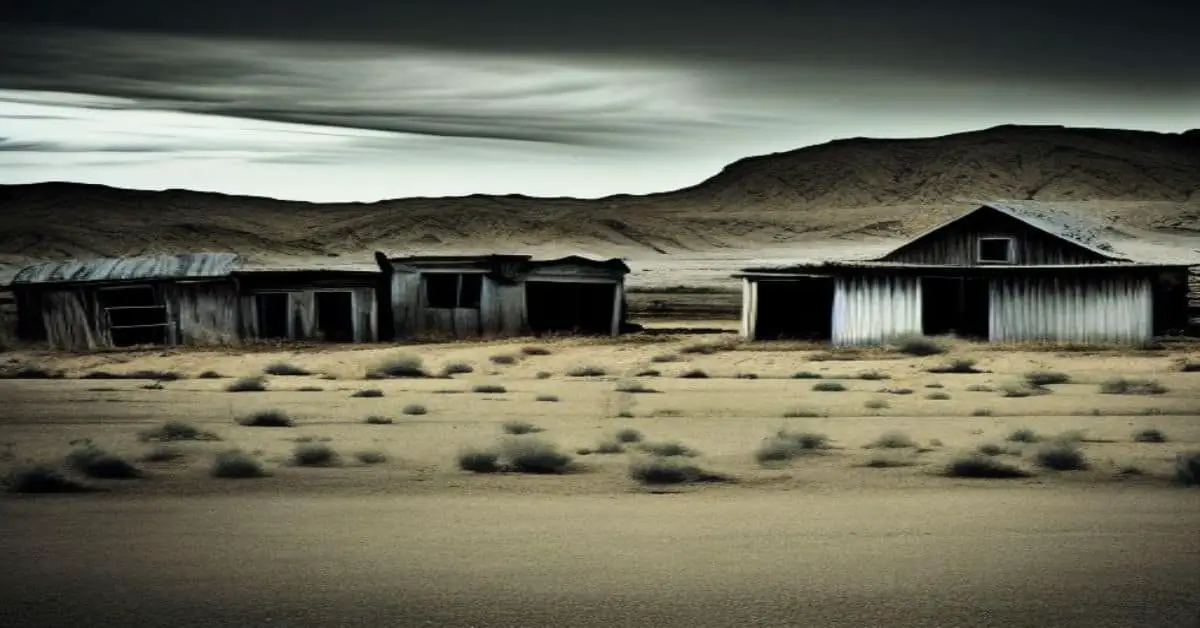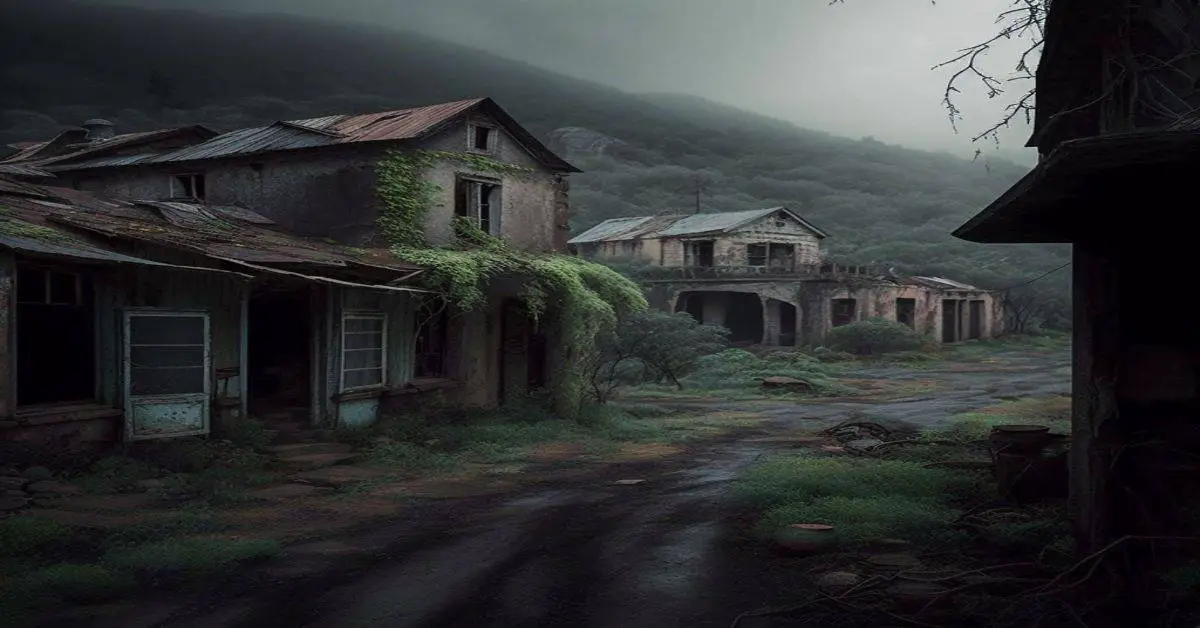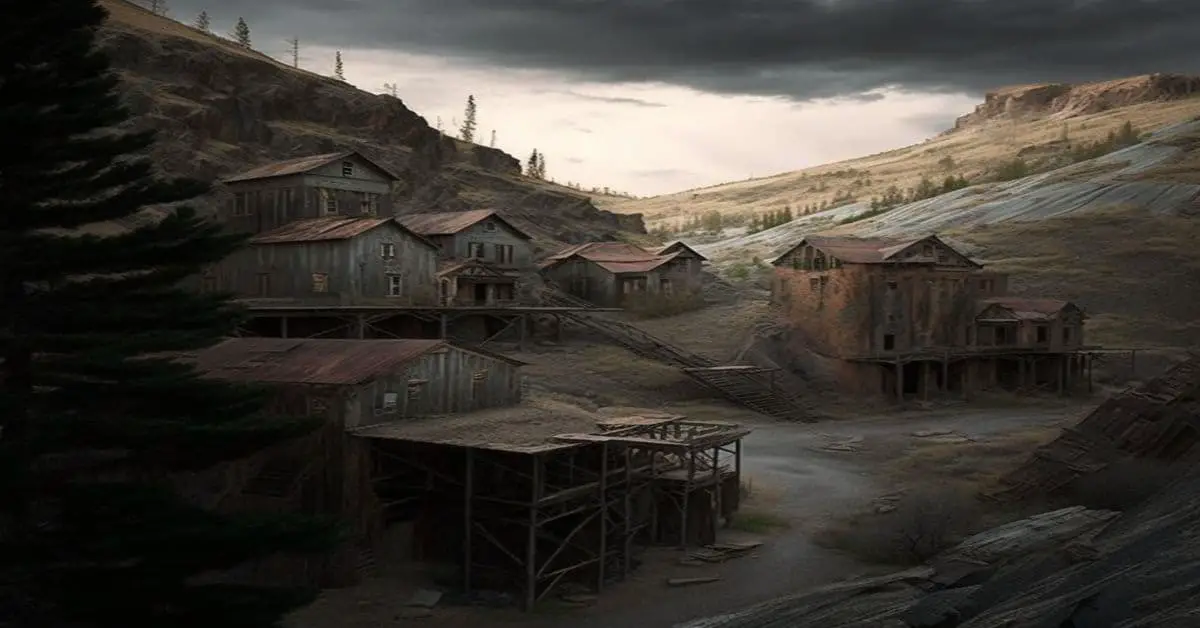Illinois is a state with a rich and varied history. From its bustling metropolises to its charming small towns, there’s no shortage of fascinating places to explore. But many ghost towns are also waiting to be discovered, hidden among the cornfields and prairies.
Once thriving communities, these towns are empty, with buildings and streets left to decay. But even though these places are abandoned, they still hold the stories and memories of the people who once lived there.
In this article, we’ll take a closer look at some of the ghost towns in Illinois and explore their haunting histories. We’ll delve into why these towns were abandoned and what remains of them today. From the once-prosperous mining town of Rosiclare to the eerie ruins of Cairo, we’ll travel through time and uncover the secrets of these forgotten places.
What Are Ghost Towns?
Before we explore the ghost towns of Illinois, it’s important to understand what we mean by the term “ghost town.” Generally, a ghost town is a once-thriving community abandoned or largely deserted. This can happen for various reasons, such as economic downturns, natural disasters, or changes in transportation or industry.
Although they are often associated with the Wild West, ghost towns exist worldwide. There are hundreds of ghost towns in the United States, many of which are located in the Midwest and the West.
The Ghost Towns of Illinois
Illinois has its fair share of ghost towns, each with its unique history and character. Some were once bustling mining towns, while others were small agricultural communities. But all of them share a haunting beauty and a sense of mystery.
Each of these towns has its own story, and we’ll be exploring why they were abandoned and what remains of them today.
The Fascination with Ghost Towns
There’s something undeniably fascinating about ghost towns. Perhaps it’s the eerie beauty of their abandoned buildings and streets or the mystery surrounding them. Whatever the reason, people have been drawn to these forgotten places for decades.
For many, exploring a ghost town is like stepping back in time. It’s a chance to experience a piece of history and connect with those who once lived there. And while these towns may be abandoned, they are not forgotten. By exploring their haunting histories, we can keep their stories alive and ensure they are remembered for generations.
In the following sections, we’ll delve into the haunting histories of some of Illinois’ most fascinating ghost towns. From the abandoned factories of Robbins to the eerie ruins of Cairo, we’ll explore why these towns were abandoned and what remains of them today. So join us as we discover the haunting history of ghost towns in Illinois.
How We Rate Ghost Towns
We rate ghost towns based on their status:
- Abandoned: Ruins and structures are in a degraded state. Perfect for urban explorers.
- Historic: Preservation efforts have been made, and sometimes plaques are installed. Good for everyone.
- Barren: Almost nothing remains of the town. Ideal for metal detectorists.
- Commercial: Commercially owned with amenities, restaurants, and stores. Great for families.
- Semi-Abandoned: Abandoned areas with a small population in the area.
- Privately Owned: Tours might be available but not open to the public.
Ghost Towns in Illinois
Appleton, Illinois
- Status: Abandoned
- History: Appleton is located about a mile north of I-74 and US-150. It used to be the county seat of Jackson County but was abandoned after the courthouse burned down in 1843.
- What’s Left: You can tour the abandoned buildings and hear ghost stories about the town’s residents. There are also some interesting historical sites to visit.
Cayuga, Illinois
- Status: Abandoned
- History: Cayuga is located northeast of Pontiac, Illinois. It was never incorporated and is now an abandoned landscape. The population reached 160 but declined as people bypassed the town with the growth of the highway system. By 1955, only 60 people lived there.
- What’s Left: The most recognizable remnants are an abandoned grain elevator and railroad depot along the Union Pacific. If you’re road-tripping on Route 66, it’s worth a stop to see what’s left of this once-thriving town.
Griggsville Landing, Illinois
- Status: Barren
- History: Griggsville Landing was once a ferry crossing the Illinois River. In 1822, Garrett Van Dusen started a ferry service, and the town eventually developed into a steamboat stop. By the late 1870s, the community was completely abandoned.
- What’s Left: A large mound near the site is all that remains, but it’s still a unique ghost town in Illinois. The town’s founder, Joseph Smith, claimed to have seen a vision and found bones of a great warrior named Zelph, which led to a mythical battle between “Lamanites” and “Nephites.”
Kincaid Mounds, Illinois
- Status: Historic
- History: The Kincaid Mounds were surrounded by a barrier made of upright logs or posts that extended around the mounds and residence areas, ending at Avery Lake. These posts were plastered with mud and had guard houses every 100 feet, which may have served as a boundary marker for the town.
- What’s Left: The ruins and mounds are protected as a historic site and can be freely explored today.
Benjaminville, Illinois
- Status: Historic
- History: Benjaminville is a historical community located 8 miles east of Bloomington, Illinois. It was founded by Quaker farmers in the 1850s on fertile prairie land and grew prosperous as a Quaker community in the Midwest. The population declined significantly after the railroad bypassed the town; by 1870, it was a ghost town.
- What’s Left: There are only nine residents in the town who take care of
Cahokia Mounds, Illinois
- Status: Historic
- Once upon a time, Cahokia Mounds in Illinois was a big city of farmers and traders. They built their homes, burying grounds, and meeting places on big mounds of earth. They even had artists who made pottery and sculptures and scientists who studied the stars.
- What’s Left: Experts have checked the mounds and found they’re still strong, even though the city has been empty for a long time. The mounds were protected from being developed into something else in the 1800s.
Cardiff, Illinois
- Status: Semi-Abandoned
- History: A long time ago, Cardiff was a busy coal-mining town near Chicago. In the 1960s, the coal business started to fade. But in the 1970s, they found their own black gold. Cardiff was home to 400 miners digging up 1,200 to 1,600 tons of coal daily.
- What’s Left: You can barely see any sign of the town. But you can still see two big piles of coal and a sign marking the spot.
Kaskaskia, Illinois
- Status: Semi-Abandoned
- History: In the past, Kaskaskia was an important trading place and a center of the Mississippi River valley. In 1741, King Louis XV gave a bell to the Catholic church there. In 1778, the people rang the bell to celebrate their freedom from British rule.
- What’s Left: Although the town is mostly empty, some people still live there and go to visit its history. There aren’t any stores or restaurants, but many old homes and buildings are still being used. The town is sometimes underwater and might one day be completely underwater, but people still live there.
Cairo, Illinois
- Status: Abandoned
- History: Cairo was once a busy port town between the Mississippi and Ohio rivers. During the Civil War, it was an important place. But, over time, the city became empty and quiet.
- What’s Left: Today, only about 2,000 people live in Cairo. The town has a sad history of racism and trouble. It had many murders in the 1920s and was home to many prostitutes. The town also had problems with flooding. Although most businesses are gone, the Federal Courthouse is still there and is now used as a court in southern Illinois.
Old Shawneetown, Illinois
- Status: Semi-Abandoned
- History: Old Shawneetown was founded in 1812 on the banks of the Ohio River. After a big flood in 1937, the town started to go downhill. But, some people still live there and visit to see its history.
Benld, Illinois
- Status: Semi-Abandoned
- History: At the beginning of Prohibition, Benld had over 300 residents and 32 saloons. It was like the wild, wild west! People still talk about Al Capone possibly doing business in the town during Prohibition. Only 1600 people live in Benld, but its history is still fascinating.
- What’s Left: You can see the ruins of the old main street and visit a display of the town’s past. A few old buildings are still standing, like a theater, a saloon, a pub, and a winery. It’s easy to imagine what the town was like in the early 1900s! A historic building, the Benld Coliseum, was destroyed in a fire last year. Today, Benld is filled with shops and restaurants and is a great place to learn about its history.
Buda, Illinois
- Status: Semi-Abandoned
- History: Buda used to be a mining town in Nevada and was named after the gold-mining industry. Only seven people live there now, but it’s a great place for outdoor activities like hiking and photography. Buda also has a lot of historical buildings and sites.
- What’s Left: Plenty of buildings to explore and cool geological discoveries exist. Scientists found a lot of trilobite fossils at Buda in the early 1960s and discovered a collection of dinosaur bones and skeletons.
That’s it for our ghost town list! But remember, there are many more out there waiting to be discovered. Take the back roads, follow train tracks, and find your hidden gems. Happy exploring!



